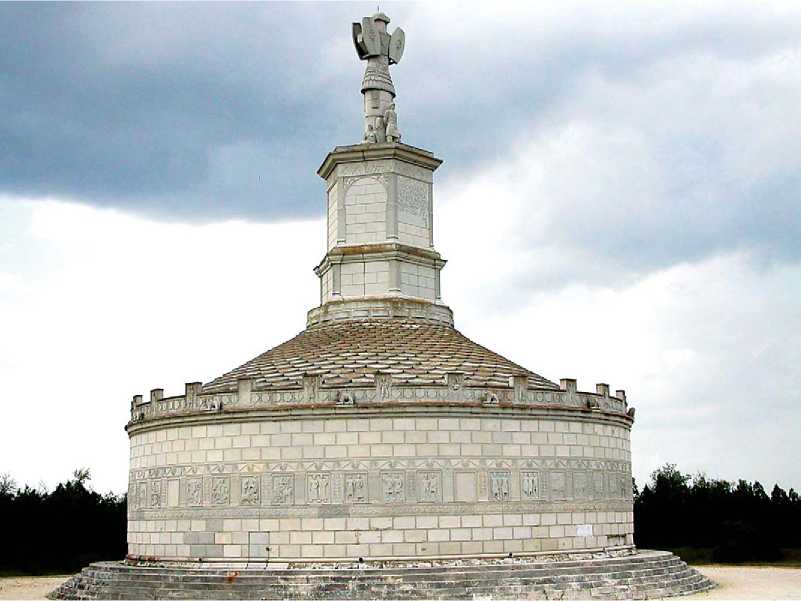Cyriac of Ancona (1391-1452) was an Italian merchant who travelled on business throughout the eastern Mediterranean and, justifiably, he may be considered the first archaeologist. Over the course of 25 years, he meticulously documented and published Greco-Roman inscriptions, monuments, artwork, and coins. However, the Renaissance passion of antiquari-anism - the undisciplined collecting of Greco-Roman art and antiquities - began a plague that persists today. Beginning in the fifteenth century and continuing for 400 years, Greco-Roman sites and monuments were seriously plundered: Most architectural and sculptural remains were found at ground surface and therefore became easy provender for avaricious popes and secular elites alike, as well as the ever-growing trade in antiquities. Many large private collections eventually made their way to museums worldwide. Problems with legal ownership of classical antiquities and repatriation issues regarding objects collected during this era still persevere - the Parthenon Marbles in the British Museum (originally detached by Lord Elgin when Greece was under Ottoman control) is a cause celebre.

Figure 1 Tropaeum Traiani (‘Trajan’s Trophy’), c. AD 109, near Adamclisi, SE Romania. Photograph: Gil Zilberstein.
It was not until the eighteenth century that more systematic study of classical antiquity began with the work of two pioneering German scholars. Johann Winckelmann (1717-68) established art history as a distinct subdiscipline of classical archaeology. In 1764, Winckelmann’s History of Ancient Art included the first chronology of Greek and Roman sculpture, a discussion of aesthetics and technique, and the social background of artistic production. In the nineteenth century, Eduard Gerhard developed the rules for classical archaeology and systematized its practices as a foundation for a profession, severing it from the tradition of antiquarianism. In 1850, he published Archaeological Theses, which provided rules for archaeological description, tools, and techniques. Gerhard also first established archaeological pedagogy in higher education at the University of Berlin.
The study of material remains in classical archaeology has also required knowledge of classical literature, especially since archaeologists have at their disposal one of the most extensive written records from ancient Greek and Roman authors against which to test hypotheses or verify identification of locations, events, and finds. A ‘classical’ example is Heinrich Schliemann’s (1822-90) obsession with Homer’s Iliad and his excavations of ‘Troy’ at
Hissarlik in NW Turkey. However, framing archaeological practice within an ancient literary tradition has limited classical archaeology to mostly place-and event-oriented and descriptive research, rather than providing explanation for sociocultural processes. Furthermore, the written record is notoriously exclusionary - produced by and for elites - and thus serves as one research tool among many (and not as a foundation) for archaeological research.
The mid - and late nineteenth century witnessed a surge of ‘great excavations’ of ancient cities and religious sites, with classical archaeologists adopting more professional and systematic approaches to excavation, documentation, and publication. In 1837, the Greek Archaeological Society was founded, followed by the establishment (in Athens) of the French, German, American, and British schools and institutes for archaeological research in Greece. From the 1870s to the 1970s, 18 countries established similar national institutes in Rome to coordinate foreign archaeological research throughout Italy. However, in the post-World War II (WWII) era, government and university funding for large-scale excavations at Greco-Roman sites has become increasingly difficult to obtain, and beginning in the 1960s multidisciplinary regional surveys (e. g., University of Minnesota
Expedition in Messenia, Greece) became both economical and productive for settlement system, land use, and environmental studies.
During the twentieth century, the Bronze Age of the Aegean region (e. g., Knossos on Crete, Akrotiri on Thera) attracted significant archaeological research interest. Island archaeology in general has flourished throughout the Mediterranean region with major excavation and surveying programs on Sardinia, Cyprus, Malta, and others. The boundaries of classical archaeology have been pushed even further with technological developments that allowed underwater surveying and excavation of shipwrecks and submerged ancient harbors.
With the development of radiocarbon dating, classical archaeology could establish an absolute chronology and allow accurate dating of any site without reliance on ancient king-lists, texts, inscriptions, or coinage. Since the 1960s, the applications of analytical methods from the fields of materials science, physics, chemistry, biology, and geology to the understanding of cultural, biological, and geological remains (i. e., archaeometry and archaeological science) have contributed to studies of mining and manufacturing operations, local and transcontinental trade and commerce, cultural adaptation to and alteration of the environment, and human health and pathology, as well as to the determination of authenticity and provenance of museum collections.
In 1993, the first in a series of conferences on the applications of archaeological and social science theory to classical archaeology was published. In 1- to 3-year intervals ever since, the Theoretical Roman Archaeology Conference (TRAC) has been held in the United Kingdom and has brought together a new generation of scholars working in all geographical areas of the Roman Empire. While a coherent body of theory in classical archaeology is yet to be clearly expressed, these multifarious collections of studies on the Roman period represent the beginning of a new direction for the profession.
Of major concern to classical archaeologists today is the continuing spoliation of Greco-Roman and prehistoric sites (e. g., the robbery of Etruscan tombs in rural northern Italy). Salvage archaeology has increased since 1990s, as a result of modern urbanization and major construction projects like the Athens subway system, all of which continue to put archaeological resources at serious risk.




 World History
World History
![Road to Huertgen Forest In Hell [Illustrated Edition]](/uploads/posts/2015-05/1432477693_1428700369_00344902_medium.jpeg)








